Bonnet Springs Park: From Sketch to Construction
From raw sketches to construction, how do our interdisciplinary design teams bring their visions to reality?
 Sasaki
Sasaki
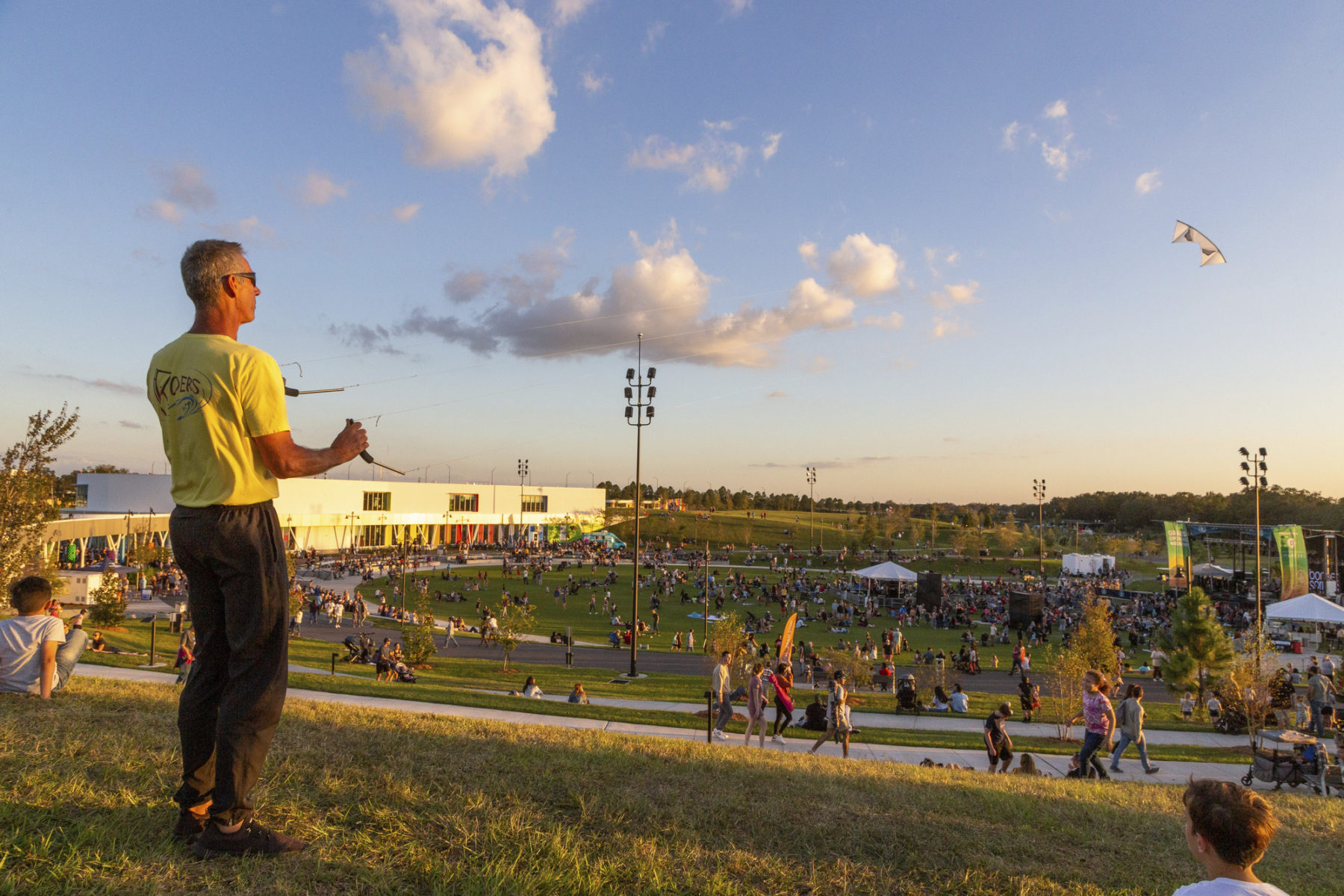
Lakeland, Florida –After five years of design and construction, Bonnet Springs Park opened to an estimated 25,000 expectant visitors this weekend in Lakeland, Florida, on land transformed from a neglected industrial site to a bustling regional destination.
The grand opening marked the culmination of a fruitful partnership between Bonnet Springs Park’s visionary leadership and Sasaki, which designed the 168-acre park from conception to completion. Before 2017, the overgrown land around Lake Bonnet sat disused and contaminated from its days as a railyard. Now, with a restored landscape and four new cultural buildings–one of which will host the Florida Children’s Museum starting in November–Bonnet Springs Park will serve as a hub of culture and ecological education for Lakeland, Central Florida, and beyond.
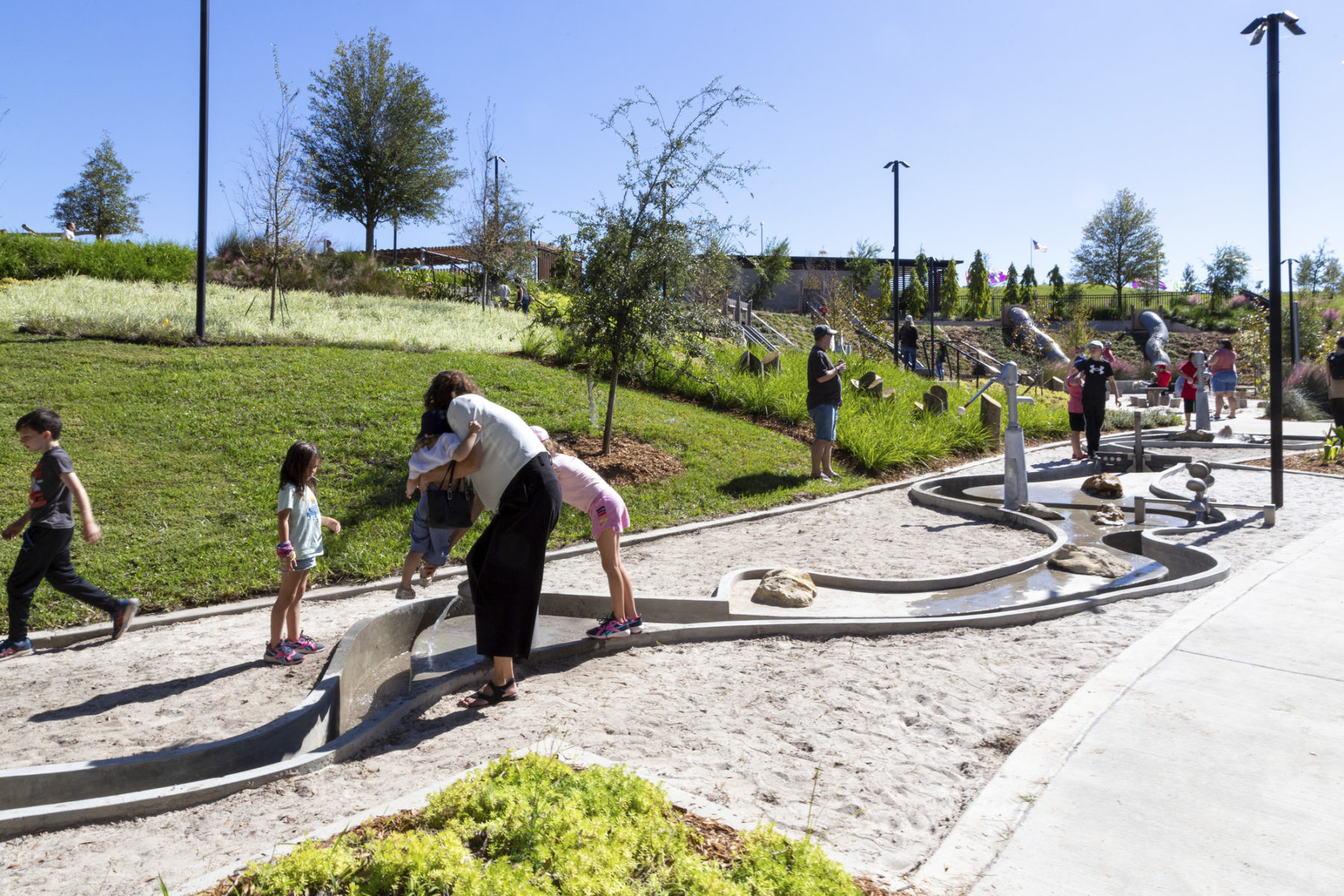
The Nature Playground’s water play area takes inspiration from the site’s sand seep spring
The weekend’s main festivities took place on the Central Green, a sweeping lawn anchored by the strikingly modern Children’s Museum and two 40-foot tall sculpted hills purpose-built to remediate the formerly-contaminated land. Other events took place at the Welcome Center, set beside the carefully curated Heritage Gardens; the Event Center, one of the first mass-timber buildings in Florida and woven into the landscape of the Botanical Gardens; and the Nature Center, an ecological education center, dramatically suspended on a boardwalk over the six-acre lagoon at the edge of Lake Bonnet. Guests to the opening of the free, privately-funded park took in concerts; tried out the four playgrounds, got to know their local wildlife alongside field experts; sampled locally-prepared food; encountered art that engaged all the senses; and experienced miles of trails through gardens, around a lagoon, and high up in the canopy of a mature oak grove.
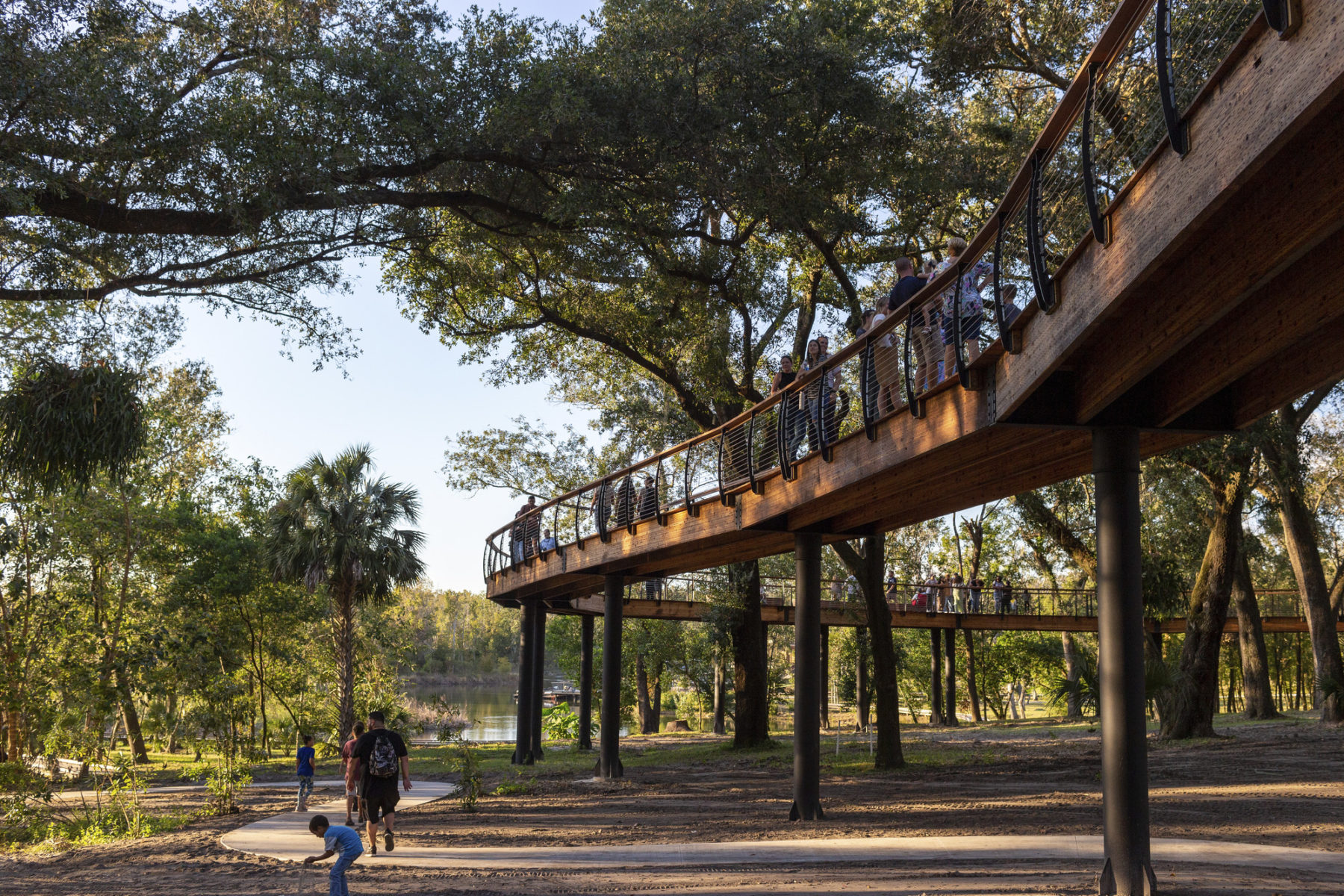
The canopy walks gives visitors a view of the park from high up in a grove of mature oak trees
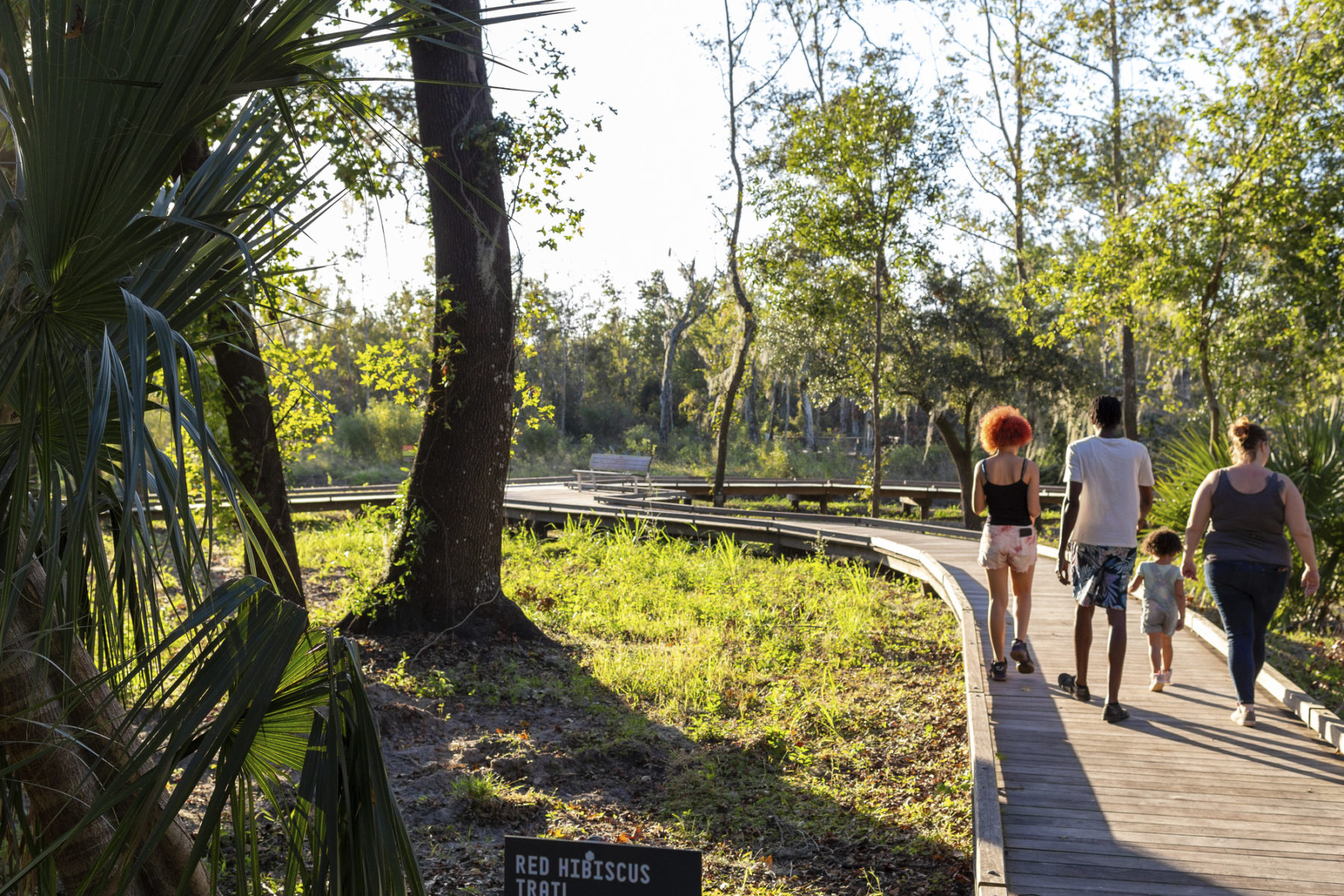
Visitors explore the lagoon from the winding boardwalk
The park’s concept derived from the need to remediate the contaminated soil that was excavated on the former industrial site. Another motivation was the desire to slow down and filter urban stormwater runoff, in effect reducing the pollution and flood risk for the Lakeland area. These aims drove the project’s topography, the features that populate the landscape, and in turn the architecture that anchors the site.
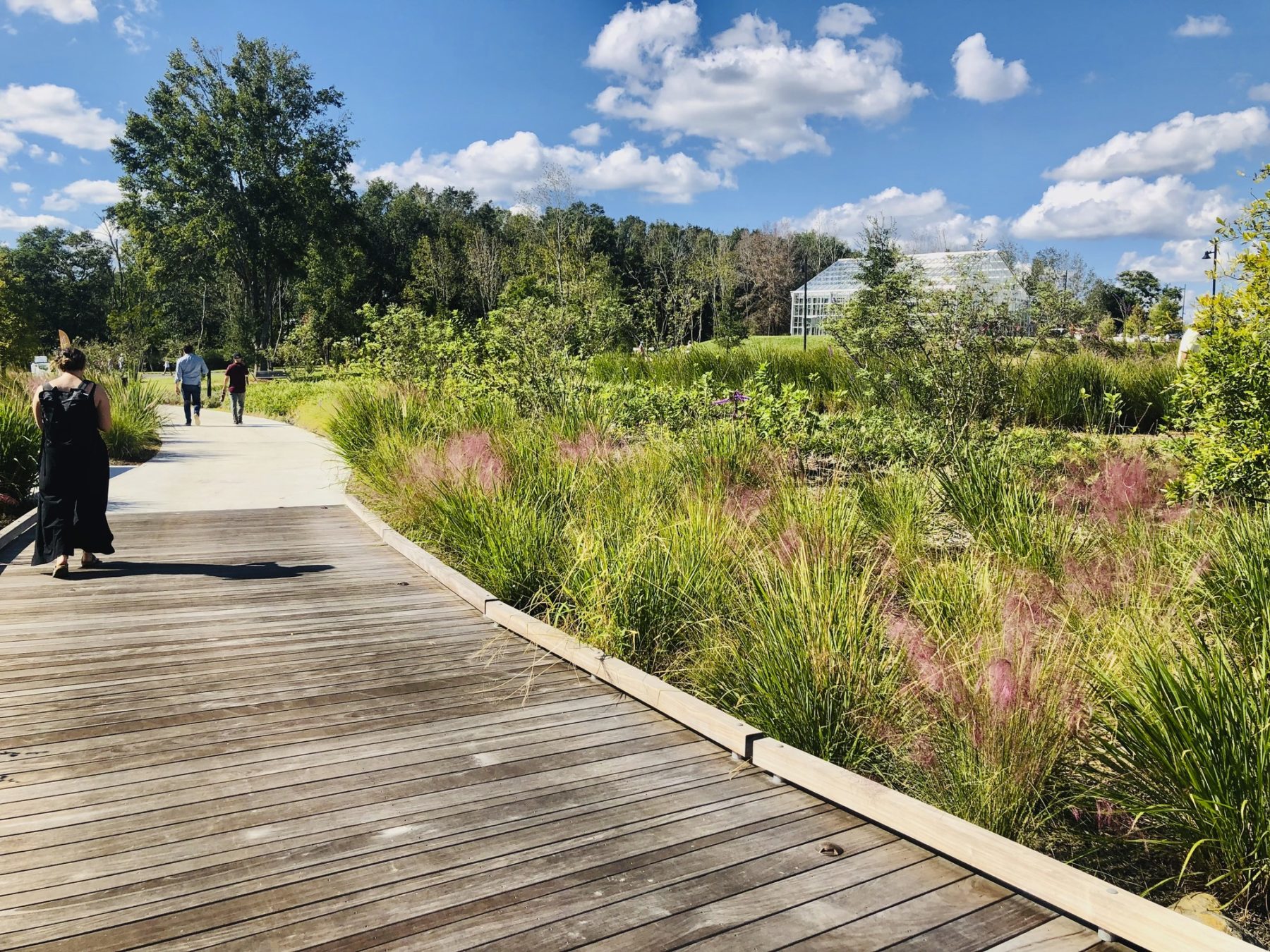
The stormwater wetlands help prevent flooding and filter the water that flows into Lake Bonnet
“Bonnet Springs Park required a level of synthesis between landscape architecture, civil engineering, and architecture throughout the design process that I truly believe only Sasaki could have provided,” said Anna Cawrse, principal and co-director of Sasaki’s Denver office. “The park was driven by the community’s desire to have vibrant cultural spaces and showcase the beautiful ecology of Central Florida. Watching thousands of people enjoy the park at its opening was truly a moving experience.”
“Bonnet Springs Park required a level of synthesis between landscape architecture, civil engineering, and architecture throughout the design process that I truly believe only Sasaki could have provided.”
-Anna Cawrse, principal and co-director of Sasaki's Denver office
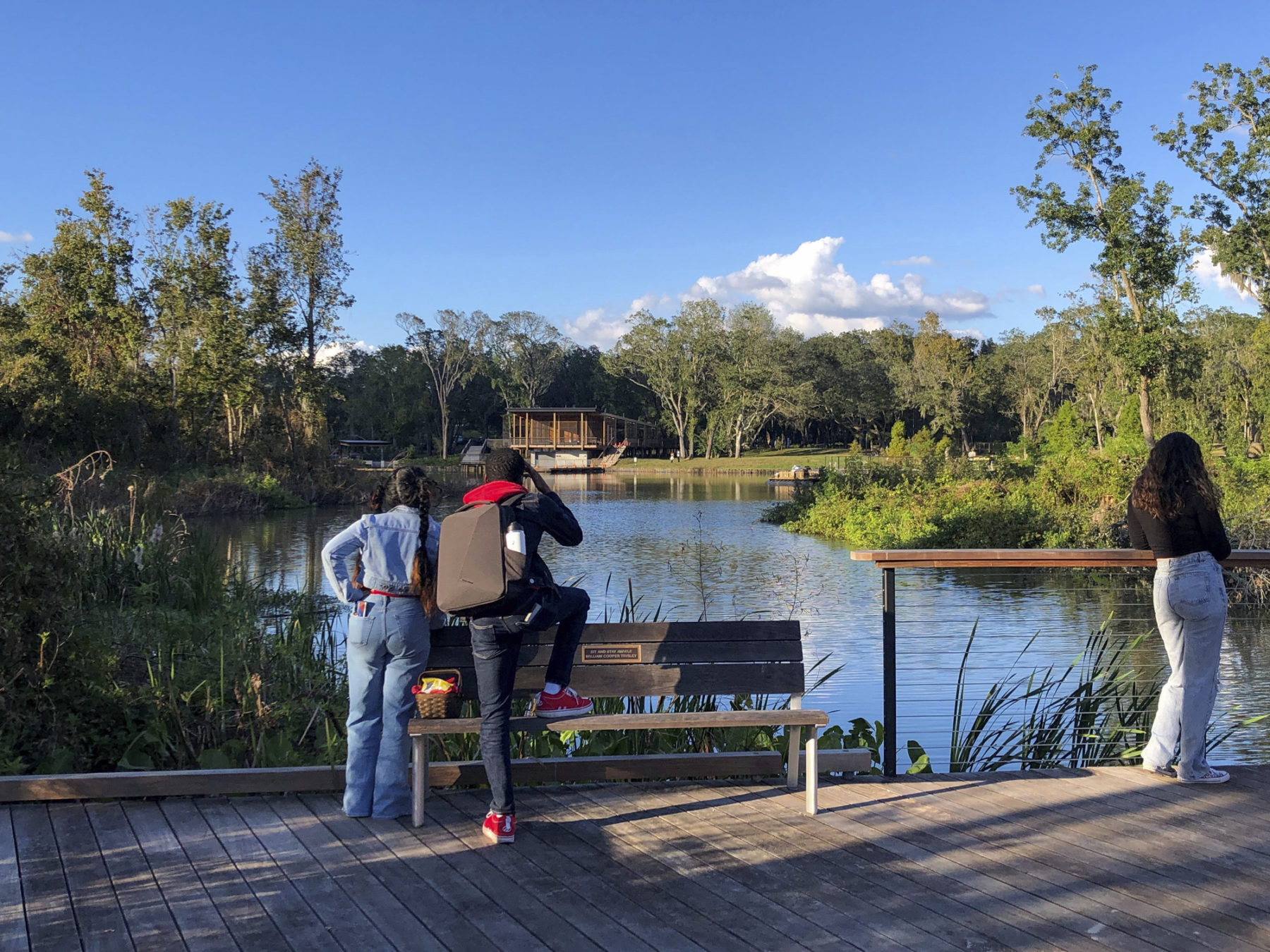
The boardwalk and lagoon with the Nature Center in the distance
“Great cities have great parks,” said Andrew Gutterman, principal. “Lakeland is a great city in one of the fastest growing regions in the country. At a time when people are rediscovering the importance of parks in the city, Bonnet Springs Park is a green oasis just blocks from downtown and will provide Lakelanders a great place to move, play, explore, gather, and learn for generations to come.”
From raw sketches to construction, how do our interdisciplinary design teams bring their visions to reality?
At Bonnet Springs Park, ecological challenges inspired Sasaki to use conservation as a main driver of form and function